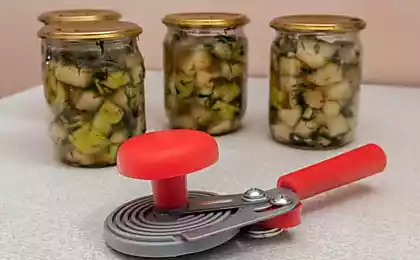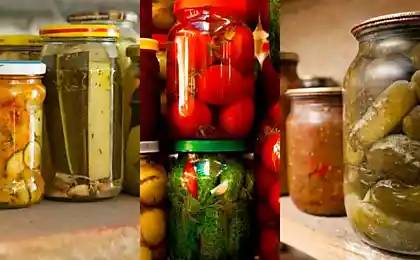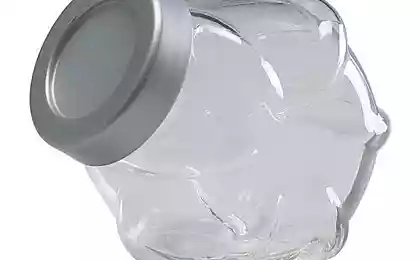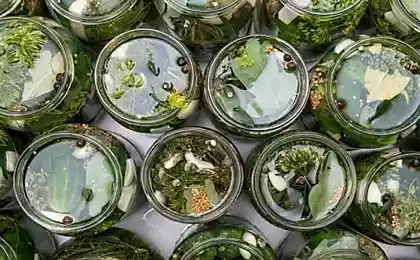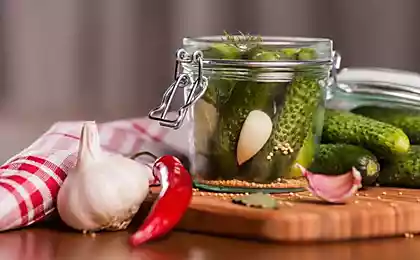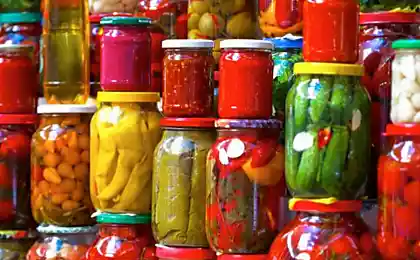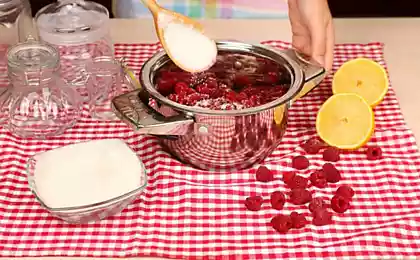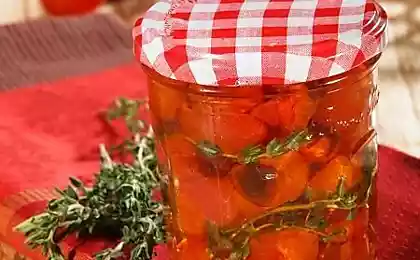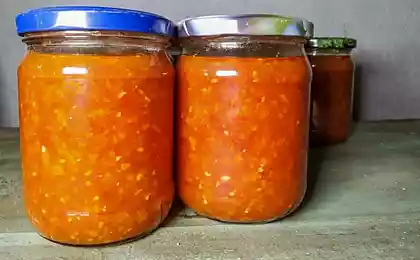221
I do conservation for money, share a quick method of sterilizing cans.
Experienced housewives know that jar sterilization It depends on how you do it. There are at least three ways. Since the winter season is in full swing, we decided to remind you how to properly sterilize banks at home. Read more about the most important thing in the article.

Sterilization means heat treatment of cans, which will be preserved. First of all, it is necessary that the product does not deteriorate and can be stored for a long time.
Before sterilization, all banks must be prepared. First, check if there are cracks and cracks in the glass itself. Secondly, thoroughly wash them under running water with soap, soda or mustard powder. The same goes for the lids if you reuse them. There should be no rust or other damage.
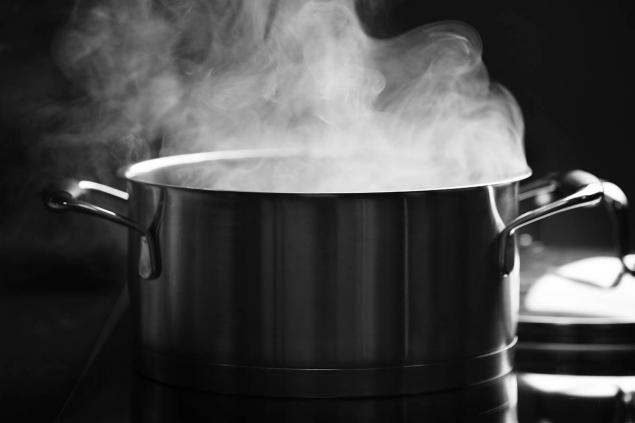
My mom always sterilized the cans the old way. To do this, she took a large pan and filled it with half water. Then she brought the liquid to a boil and threw the lid into the water. And on the pot itself, I installed an iron big badge.
The next step is to place a jar on the back neck down so that the pairs pass inside the vessel. Thanks to the dummy, the bank will be stable. However, this task is even more dexterous. sterilizer.
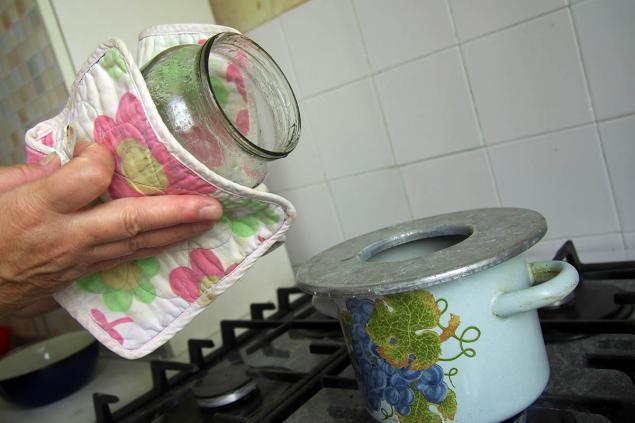
This is an iron fixture that is attached to a pan. There's a hole in it, perfect for a jar's neck. That's where she needs to be put. Exactly how it works, you can see in the photo above.
In this case, the time of sterilization of the cans depends on their size. Half-liter cans are enough to hold over the steam for 6-8 minutes, liter and 2-liter cans for 10 to 15 minutes. And cans of 3 liters or more need to be sterilized for at least 20-25 minutes.
It is very easy to understand that banks are ready for further work. Inside, large drops of water will begin to appear on the surface. After the can, put the neck down on a clean and dry cotton towel. We do the same with lids. They need to dry completely before you start filling them with food.
Sterilization of cans in other ways Banks can be sterilized in windpipe. To do this, clean and dry cans should be placed with a neck down on the grille in a cold oven. Then set the temperature no higher than 100-110 degrees and set the timer for 20 minutes. Then you need to turn off the oven and wait until the banks are completely cooled.

Reusable iron covers can be sterilized in the same way. Rubber covers cannot be placed in the oven because they will melt.
Banks can also be sterilized in microwave. To do this, you need to pour some clean water into each of them. Set the maximum power in the microwave and send each jar there for 3-5 minutes.
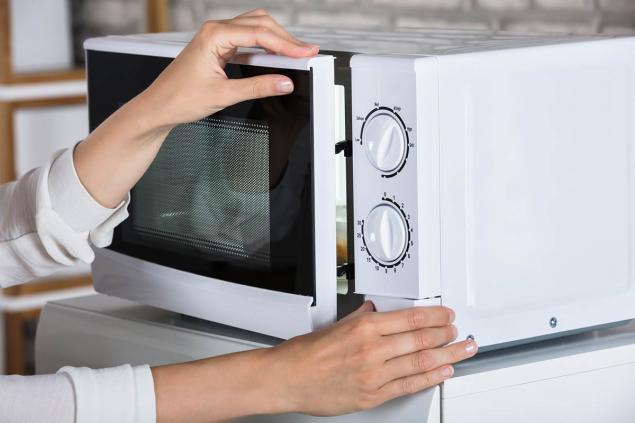
During this time, the water in the banks should boil, and inside on their surface will appear large drops of water. After the water from the cans must be poured, and the banks themselves put on a clean dry towel neck down. However, remember that microwave covers cannot be sterilized.
And the last way, sterilization of cans in a steamer or multicooker. It works just like the pot method. In the container you need to pour water, throw lids there, and put a nozzle for cooking on top for a couple.
 43
43
Then you need to turn on the same mode and install the banks on this nozzle neck down. The time of sterilization, as in the first method, depends on the size.
If you're going to make a splash for the first time, don't be afraid of sterilizing the cans. As you can see, it's very simple. Choose a convenient method for yourself and start preparing for the cold right now. You're gonna make it!

Sterilization means heat treatment of cans, which will be preserved. First of all, it is necessary that the product does not deteriorate and can be stored for a long time.
Before sterilization, all banks must be prepared. First, check if there are cracks and cracks in the glass itself. Secondly, thoroughly wash them under running water with soap, soda or mustard powder. The same goes for the lids if you reuse them. There should be no rust or other damage.

My mom always sterilized the cans the old way. To do this, she took a large pan and filled it with half water. Then she brought the liquid to a boil and threw the lid into the water. And on the pot itself, I installed an iron big badge.
The next step is to place a jar on the back neck down so that the pairs pass inside the vessel. Thanks to the dummy, the bank will be stable. However, this task is even more dexterous. sterilizer.

This is an iron fixture that is attached to a pan. There's a hole in it, perfect for a jar's neck. That's where she needs to be put. Exactly how it works, you can see in the photo above.
In this case, the time of sterilization of the cans depends on their size. Half-liter cans are enough to hold over the steam for 6-8 minutes, liter and 2-liter cans for 10 to 15 minutes. And cans of 3 liters or more need to be sterilized for at least 20-25 minutes.
It is very easy to understand that banks are ready for further work. Inside, large drops of water will begin to appear on the surface. After the can, put the neck down on a clean and dry cotton towel. We do the same with lids. They need to dry completely before you start filling them with food.
Sterilization of cans in other ways Banks can be sterilized in windpipe. To do this, clean and dry cans should be placed with a neck down on the grille in a cold oven. Then set the temperature no higher than 100-110 degrees and set the timer for 20 minutes. Then you need to turn off the oven and wait until the banks are completely cooled.

Reusable iron covers can be sterilized in the same way. Rubber covers cannot be placed in the oven because they will melt.
Banks can also be sterilized in microwave. To do this, you need to pour some clean water into each of them. Set the maximum power in the microwave and send each jar there for 3-5 minutes.

During this time, the water in the banks should boil, and inside on their surface will appear large drops of water. After the water from the cans must be poured, and the banks themselves put on a clean dry towel neck down. However, remember that microwave covers cannot be sterilized.
And the last way, sterilization of cans in a steamer or multicooker. It works just like the pot method. In the container you need to pour water, throw lids there, and put a nozzle for cooking on top for a couple.
 43
43Then you need to turn on the same mode and install the banks on this nozzle neck down. The time of sterilization, as in the first method, depends on the size.
If you're going to make a splash for the first time, don't be afraid of sterilizing the cans. As you can see, it's very simple. Choose a convenient method for yourself and start preparing for the cold right now. You're gonna make it!
On the advice of the elder took an onion, went to the hallway and cleaned the house of swearing, spoilage and troubles.
Closing cucumbers according to the recipe of an old Jewish woman from Shargorod, sweet and savory, perfect for hamburgers

